 |
SRGC Bulb Log Diary |
| Home Recommend This Site To A Friend |
|
BULB LOG 22 28st May 2003
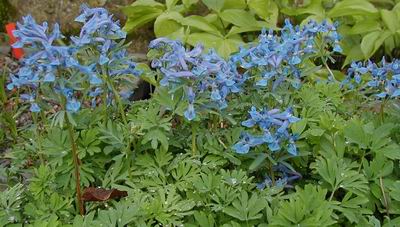
Corydalis cashmiriana The fabulous blue flowers of Corydalis cashmiriana are enjoying the cool wet conditions that we are experiencing at the moment. To get the best out of this choice corydalis it is best split and replanted every second year or so, I will come back to this in a later log when we split ours. 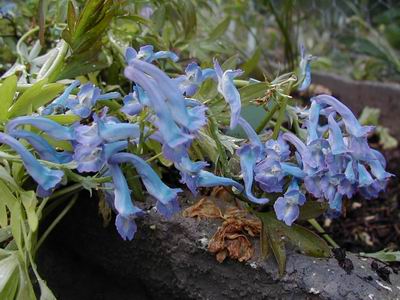
Corydalis turczaninowii Another good blue corydalis that enjoys similar cool, moist humus rich soils (this should be no surprise as it comes from Far Eastern Russia) is Corydalis turczaninowii, we are growing it in pots, fish box troughs and the garden, where it is slowly multiplying from both seed and by increasing bulbs. 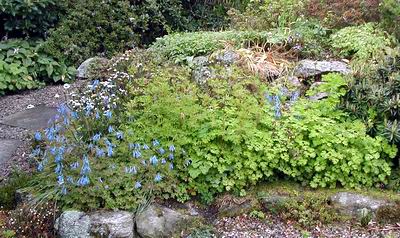
Corydalis flexuosa, x'Craigton Blue' & elata To the left in this picture is another blue corydalis, this is the excellent garden plant Corydalis flexuosa which multiplies rapidly when growing in good conditions. To the right hand side of the picture is Corydalis elata a later flowering close relative of C.flexuosa which has pale green less divided leaves and a darker blue flower. In the middle is a hybrid between the two with C. elata being the seed parent, we have named it Corydalis x'Craigton Blue'. 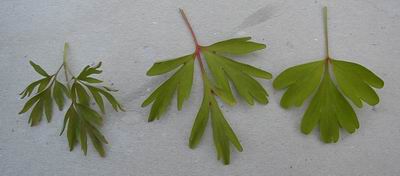
Corydalis leaves You can see from their leaves that the hybrid x'Craigton Blue'(centre) is exactly half way between flexuosa (left) and elata (right), this is also so for its flowers which are intermediate between those of the parents. Have you ever smelt the flowers of Corydalis elata, they are the best smelling of this group with a very strong honey scent which fills the air, especially on a warm evening. 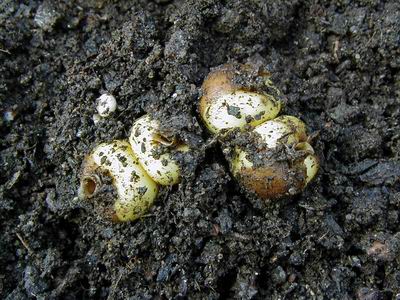
Corydalis bulbs Now is the time that I start to split the early flowering Corydalis of the solida group, before I forget where they are. Most are planted in lattice pots which makes it very easy to lift them without damage. I like to do it as soon as the foliage collapses as it is the foliage that helps me locate the plunge pot in the ground. Corydalis solida foliage dies back in a different way to many bulbs which die back from the top of the growth then gradually down the stem to the bulb. Not so Corydalis solida types, their bulbs just let go of the foliage and stems which then collapse having been cut off from their food source, so I have to be quick or I cannot find them in the garden. 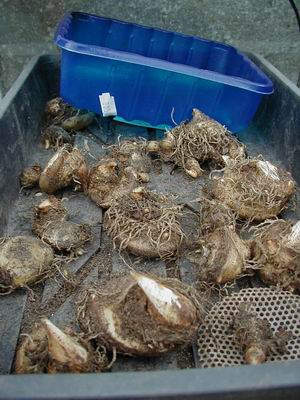
Arum creticum corms Remember the poor frozen Arum creticum, here are its' corms which I always like to get out of the compost as soon as the growth dies back so I can dry them off. As we do not get very hot conditions in Aberdeen the compost can be too moist for this plant when it goes dormant, also the remains of last years corm can hold a fair bit of moisture which, if conditions are not correct, start a rot which attacks the new corm. Once they have dried off for a few days they can be repotted into fresh dry compost. 
Frit pyrenaica A box of first year seedlings of Frit pyrenaica which I will keep growing for as long as possible with plenty liquid feeding to build up the bulbs. 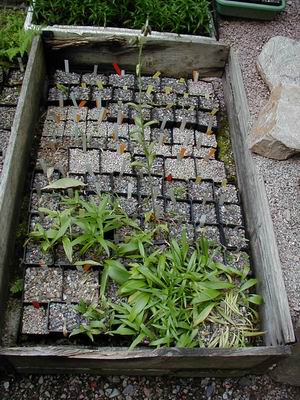
Frit seed frame 1 Many of the frits in the seed frame have gone down now but the ones at the front which are still growing strongly are mostly Chinese and Russian ones, these grow on much longer than many of the others that we grow. You may also see a tall Frit affinis still in flower, this is the form from British Columbia that I pictured in the last log, it has a habit of flowering after all the other affinis have past. 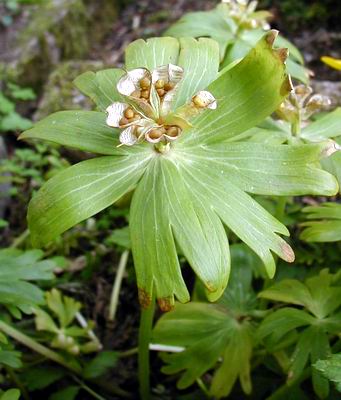
Eranthis seed It is also time to be collecting seed when it ripens, like this Eranthis which I sow immediately by scattering it directly into other areas of the garden where we want more of it and in three years the majority of them will be flowering. ^ back to the top ^ |